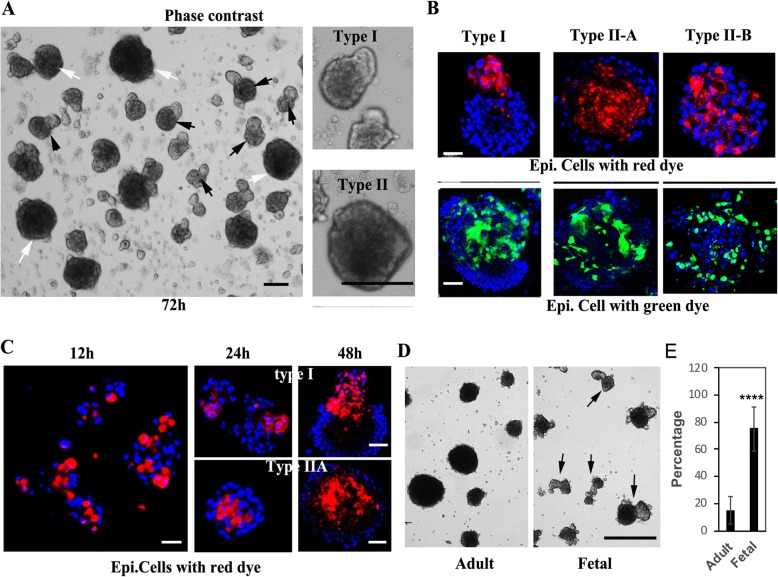Fig. 3.
Fetal scalp-derived dermal cells and foreskin-derived epidermal cells form aggregates with a polarized pear-shape structure. a Representative images of aggregates formed from a 3-day (72 h) culture of fetal scalp-derived dermal cells mixed with newborn foreskin-derived epidermal cells at a 1:1 ratio in suspension. White arrows indicate type II aggregates with a spherical morphology and black arrows indicate type I aggregates with a pear-like shape. Higher magnification images of type I and type II aggregates are shown in the right panels. Bars = 200 μm. b Representative images of 3-day aggregates formed from mixtures of fetal scalp-derived dermal cells and membrane dye labeled foreskin-derived epidermal cells. The upper panels show aggregates with red dye labeled epidermal cells and the lower panels show aggregates with green dye labeled epidermal cells. Nuclei are stained with DAPI (blue). Bars = 50 μm. c Representative images of aggregates formed from fetal scalp-derived dermal cells mixed with red dye labeled foreskin-derived epidermal cells, collected at 12, 24, and 48 h after suspension culture. Nuclei are stained with DAPI (blue). Bars = 50 μm. d Representative images of 2d (48 h) aggregates formed using adult scalp-derived dermal cells (Adult) or fetal scalp-derived dermal cells (Fetal) with the same foreskin-derived epidermal cells. Black arrows indicate type I aggregates. Bar = 500 μm. e Quantification of the percentage of type I aggregates formed in d; ****P < 0.001 when the fetal group is compared with the adult group

